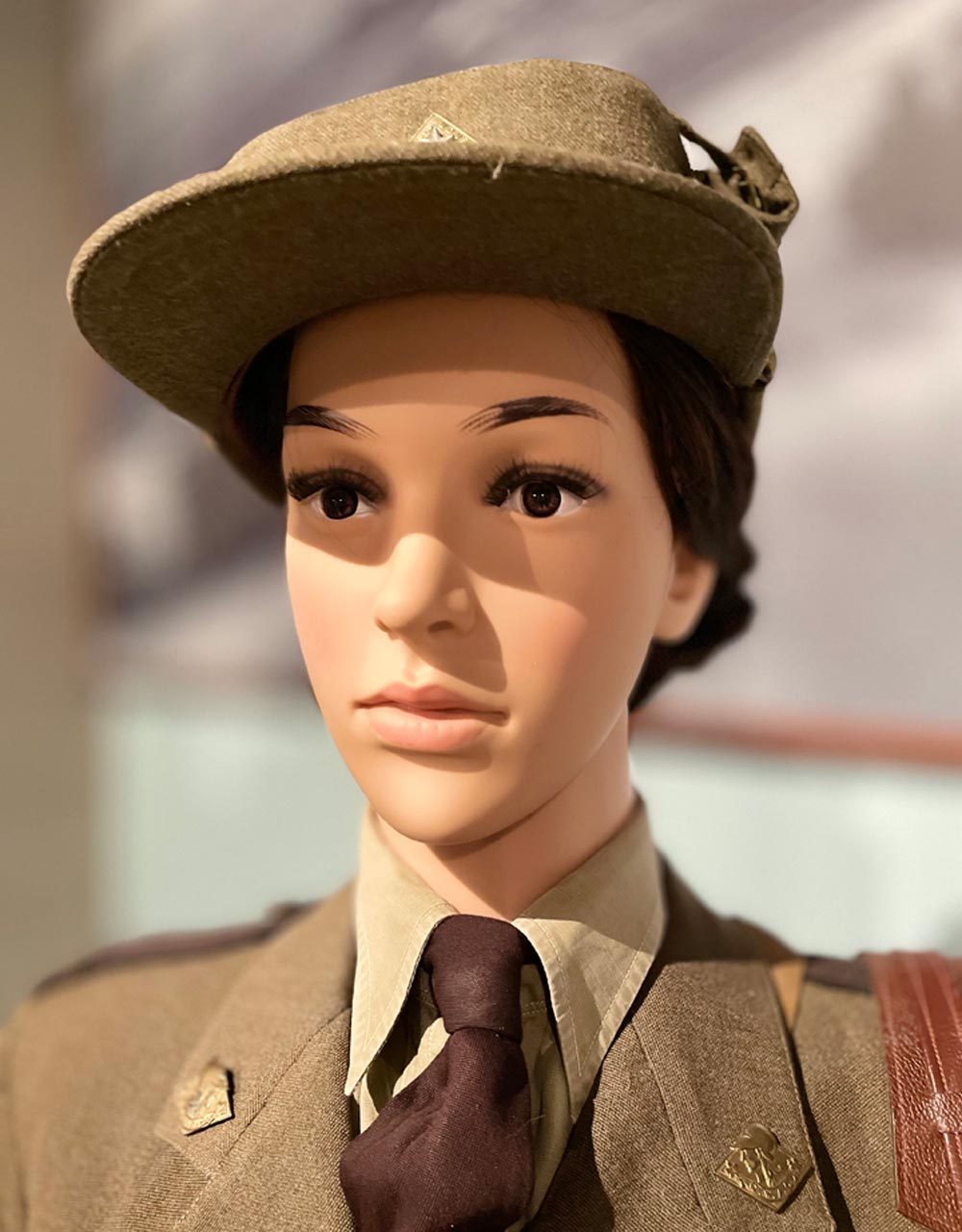
RCA Museum visitors can spot a new mannequin proudly sporting a well-adorned Canadian Women’s Army Corps (CWAC) uniform. Although female Gunners were never in active combat roles, they served as plotters, telephonists, recorders and predictors in plotting rooms and did administrative work in anti-aircraft batteries. Photos Jules Xavier/Shilo Stag
Venessa Leger
Stag Special
RCA Museum staff recently added a female mannequin to its Second World War display, as women in the Canadian Army gained importance during that period.
Although female Gunners were never in active combat roles, they served as plotters, telephonists, recorders and predictors in plotting rooms and did administrative work in anti-aircraft batteries.
Museum visitors can spot a new mannequin proudly sporting a well-adorned Canadian Women’s Army Corps (CWAC) uniform.
The CWAC uniform, a home-front winter dress, consists of an olive drab-coloured jacket and skirt made from barathea — a soft fabric blend of wool, silk and cotton. A distinct part of a woman’s uniform is a lozenge-shaped cap badge with three maple leaves, the CWAC’s insignia.
On each side of the jacket’s notched lapels are collar dogs of the helmeted Greek Goddess of War, Athena. Brass buttons also depicting Athena decorate the front of the coat and the dark brown epaulettes. This ensemble combines nicely with a matching brown tie, leather gloves, stockings, and issued shoes.
The uniform features unique decorations specific to its time. For example, both sleeves include colourful hexagonal patches representing volunteer service with the Canadian Pacific Force and corporal rank chevrons. A small round badge with the red letters GS, for General Service, near the left wrist signifies volunteering for service overseas.
On the opposite sleeve is a patch with four red chevrons, one for each year of service. The museum’s mannequin also carries a canvas bag with a gas mask and a leather handbag for personal items.
Women have played a significant role in the Canadian Militia for more than 100 years, from a dozen nurses during the North-West Rebellion of 1885 to more than 2,800 nurses during the First World War.
The government of Canada authorized women to serve alongside their male counterparts in 1941 and officially integrated the CWAC into the Canadian Army in 1942 to increase the military force.
During the Second World War, 50,000 women served in the Canadian Army — 21,624 of them were in the CWAC. They had various roles ranging from the more traditional ones, such as cooking and cleaning, to the pioneering ones in the technical and mechanical fields. Many female soldiers served overseas, primarily in Britain.
Canada disbanded the CWAC after the war in 1946, then reformed the corps and ultimately abolished it in 1964. Henceforth, women could join the Canadian Armed Forces (CAF), but with some occupation restrictions. In 1971, the Royal Commission on the Status of Women issued recommendations which led the CAF to ease constraints on women soldiers — they were no longer limited in enlistment numbers or employment opportunities. It was not until 1989 that women could join the Royal Regiment of Canadian Artillery (RCA).
Today, all military occupations are open to women, representing 15.9 per cent of the CAF. Women wearing the uniform are ambassadors of Canada paying tribute to the CWAC trailblazers. During the Second World War, Canadian women in CWAC uniforms stood tall, faced adversity and countered gender stereotypes.


